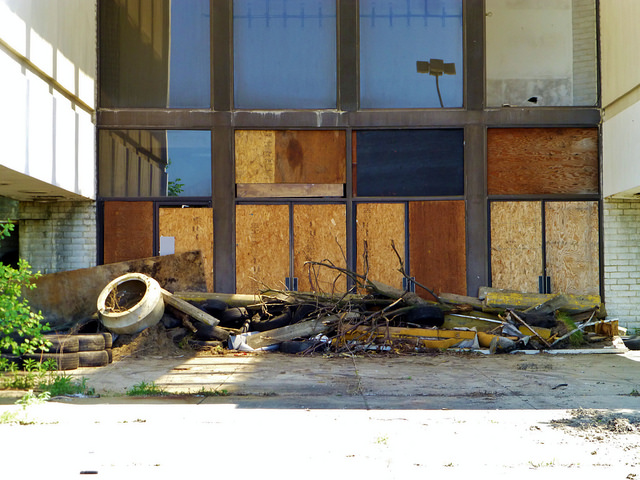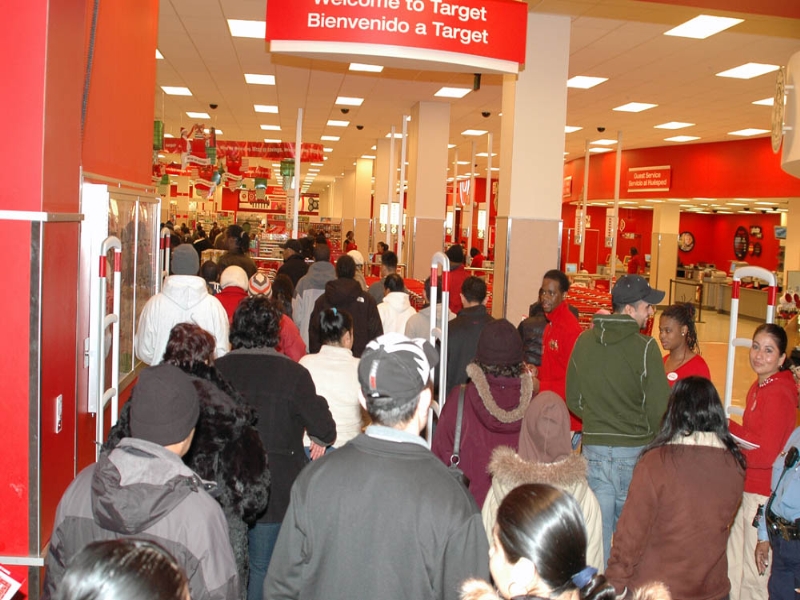Podcast: Play in new window | Download
Subscribe: RSS

The Randall Park Mall in Ohio was once the world’s largest, with two million square feet. It has ben rotting down since 2009. (Photo by Nicholas Eckhart/Flickr)
The Masters of the Universe like to talk about our “consumer economy,” as if we have discovered the equivalent of the perpetual motion machine: an economy that can prosper while consuming, without having to produce anything except fast food and loan documents. Such an economy has the future of a snake that has swallowed its own tail — that full feeling is not going to last. Such an economy is not a “consumer” economy — that is almost an oxymoron — but a consumptive economy, which is to say one suffering from a wasting disease.
People trapped in a burning building don’t spend much time worrying about whether they have a wasting disease. So it’s understandable that with the American oil revolution imploding and the stock market reeling drunkenly along the edge of a cliff, not much attention is being paid to the spreading dry rot of ordinary American retail business. Still, it’s there. Continue reading
